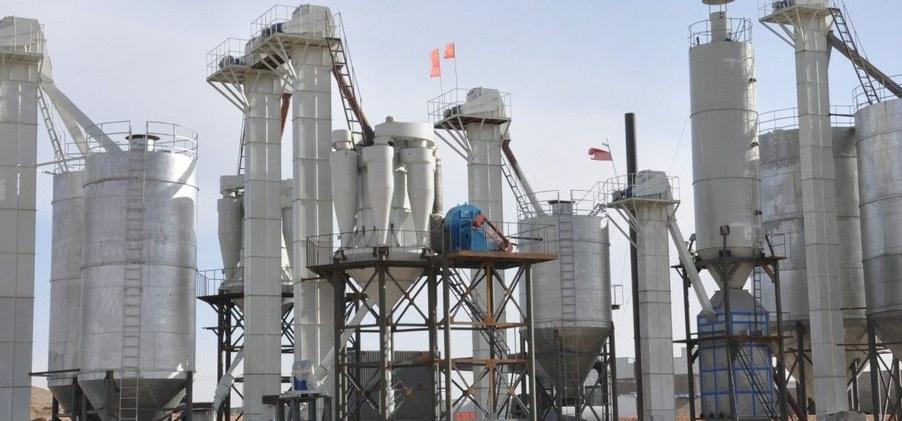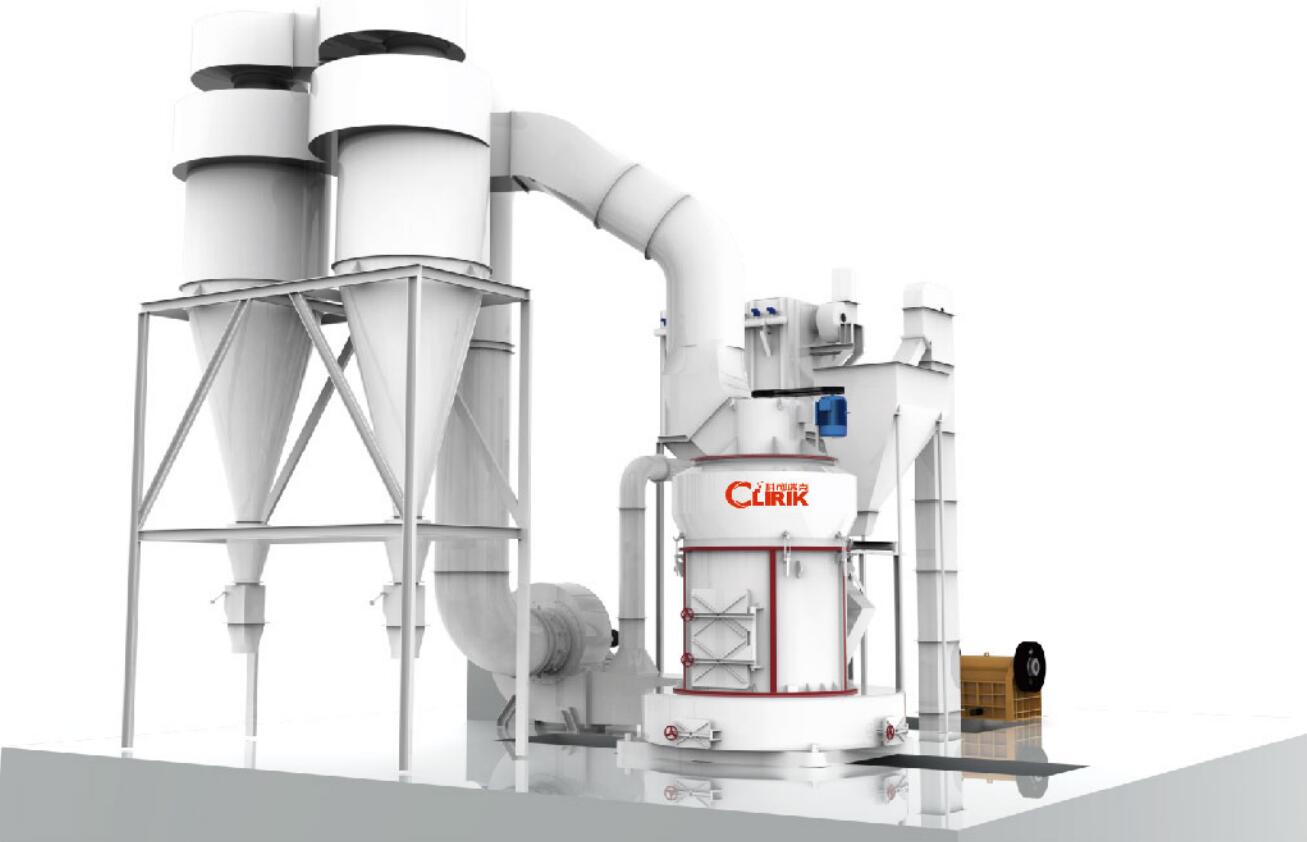How Does The Gypsum Powder Production Line work?-CLIRIK-Gypsum Making Machine Supplier
Source:nclirik
Posted:2021-06-15
Gypsum Powder Production Line
The gypsum crusher machine crushes the large gypsum ore into small particles of less than 30mm and conveys them to the gypsum powder machine for grinding. Gypsum powder that reaches the required fineness of the product after grinding is sent to the gypsum making machine boiling oven for calcination. A piece is returned to the gypsum grinding machine for re-grinding until it is qualified. The calcined qualified gypsum powder is sent to the gypsum making machine clinker container for storage or to the product workshop for use.

Gypsum powder
Gypsum powder is usually white, colorless and transparent crystals called translucent gypsum, sometimes grayish-yellow, light brown, and other colors due to impurities.
Gypsum powder is widely used in building materials, model molds, ceramics, dentistry, crafts, food, and other fields.
For gypsum powder processing, the following gypsum powder machines can be chosen:
- High pressure suspension roller YGM Raymond mill: processing fineness between 15-425 mesh (fineness can be arbitrarily adjusted);
- HGM Medium speed superfine mill : the machining fineness is between 325-3000 mesh (fineness can be arbitrarily adjusted),
- European version of the coarse powder milling machine has a machining fineness of less than 3mm.
Gypsum powder production line can not only process gypsum, but also non-flammable and explosive brittle materials ultra-fine powder with medium and low hardness, Mohs hardness ≤6, such as calcite, gypsum, limestone, dolomite, carbon black, kaolin, bentonite, talc, celestite, magnesite, illite, pyrophyllite, vermiculite, sepiolite, attapulgite, rectorite, diatomite, barite, gypsum, alumite, graphite, fluorite, rock phosphate, potassium ore, pumice stone and more than 100 kinds of materials .

Working Principle of Gypsum Powder Production Line
The working principle of gypsum powder production is to add raw gypsum and desulfurized gypsum from the feed port and make effective contact with the outer wall of the heat exchange tube in the cylinder. The flue gas from the boiling furnace is used as a means for desulfurization. the gypsum is heated and calcined and the calcined product is collected from the exhaust port. Due to the indirect heat exchange, a higher partial vapor pressure can be achieved in the cylinder, which has a positive impact on the quality of the product.In addition, the plaster does not have direct contact with the heating medium, which it retains in greatly purity. of the product. Indirect heat exchange rotary calciner technology can effectively control gypsum removal from gypsum dihydrate to gypsum hemihydrate by strictly controlling the intensity of calcination. The main technology used in this process is the use of a fluid bed furnace to provide a heat source, which can greatly reduce coal consumption and make the most of the heat. The daily output is 100-1000 tons, which is the ideal equipment today. industrial gypsum calcination process.
Production Process of Gypsum Powder Production Line
According to the process requirements, the construction plaster production line is generally divided into five parts, namely the crushing system, the crushing system, the liming system, the storage and transportation system and the control electric.

1. Crushing system:
Gypsum raw material enters gypsum crusher machine through feeder, and crusher crushes large gypsum ore into small particles less than 30mm for use. According to the size of gypsum raw materials and different production requirements, you can choose a crusher with corresponding specifications, generally PE jaw crusher, PC hammer crusher or PF impact crusher, etc. To protect the environment and clean, it can be equipped with dust removal equipment to meet environmental protection emission requirements.
2. Transportation of raw materials:
The crushed gypsum raw materials are transported to the storage silo for use by means of a hoist. The storage container is designed in accordance with the material storage time requirements to ensure a stable supply of materials.
3. Grinding system:
Materials are fed uniformly and continuously into the gypsum powder mill machine through the electromagnetic vibrating feeder for grinding. The ground gypsum powder is blown out of the air stream by the gypsum grinding mill machine fan and classified by the analyzer above the host. The fineness of the powder meets the specifications, enters the cyclone collector with the flow of the wind, and is discharged through the powder outlet tube after being collected to become the finished product. The finished product falls into the screw and is transported to the next calcination plant. The entire air path system is closed and circulating. The bag filter is inserted through the tube between the large cyclone collector and the fan to remove the dust in the air, and then discharged to the environment to ensure that the environment is clean. The material that goes through the crushing system ranges from 0-30mm grain size to 80-120 mesh, which meets the fineness requirements of drywall.
The main equipment for grinding is the crane, storage container, vibrating feeder, gypsum mill, screw conveyor, bag filter, etc. The gypsum powder making machine adopts CLIRIK's new patented HGM ultrafine mill. Since the mill has a dust separator inside, there is no need for an external dust separator, which simplifies the process.
4. Calcination system:
The system mainly includes hoist, boiling oven, electrostatic precipitator, Roots fan and other equipment. The used boiling furnace is currently the most widely used construction plaster calcining equipment in my country. It has small equipment, large production capacity, simple structure, not easy to damage, compact equipment, small size, low power consumption, easy operation, easy automatic control. , good product quality and fired The composition of the gypsum phase is ideal, the physical properties are stable, the capital investment in construction is low, and the operating cost is low.It is widely used in the calcination process of natural gypsum and chemical plaster. .
5. Electrical control system:
The electrical control system adopts the current advanced centralized control, DCS control or PLC control, and all the control components are selected from well-known foreign brands.
Related Newsmore >>
- CLIRIK Welcomes a Surge of Visitors During CHINACOAT 2025 Season — Free Shuttle to Pudong Showroom N2025-11-25
- Ultrafine Grinding of Recovered Carbon Black (rCB) Using HGM Mill2025-10-23
- HGM Ultrafine Grinding Mill for Limestone in Cement Industry2025-10-15
- Happy China National Day 20252025-09-29
- CLIRIK Ships HGM Mill to India: Fine Limestone Powder for Rubber & Plastic Fillers2025-09-25
- CLIRIK Mill Processing CaCO₃ at 500,000 tons/year, 600–3000 mesh2025-08-29













